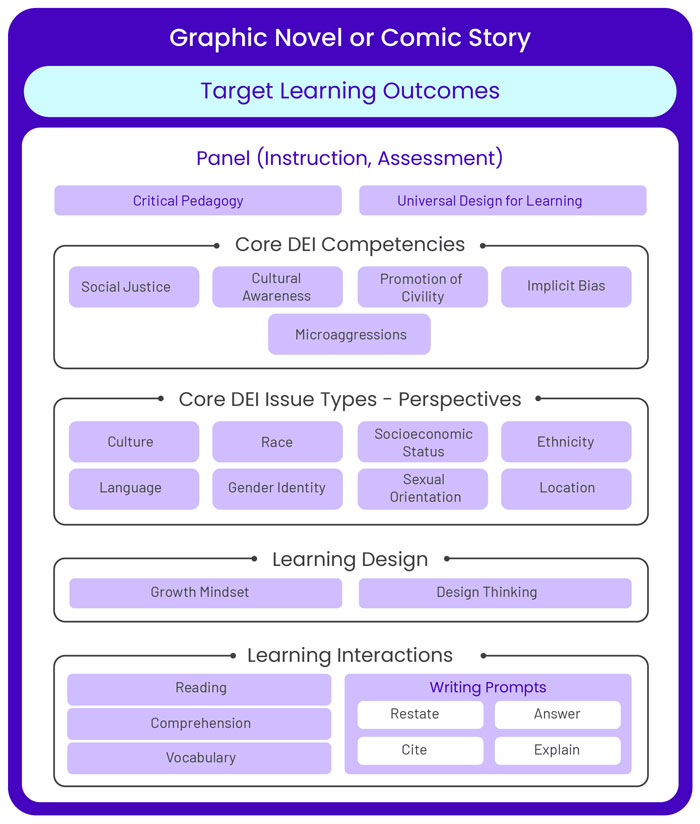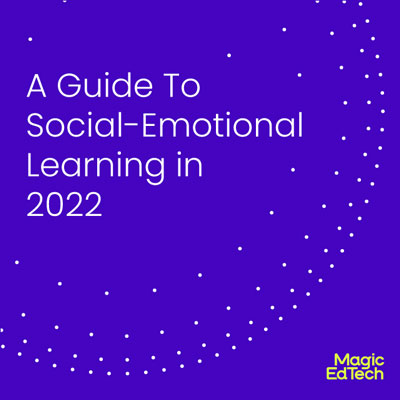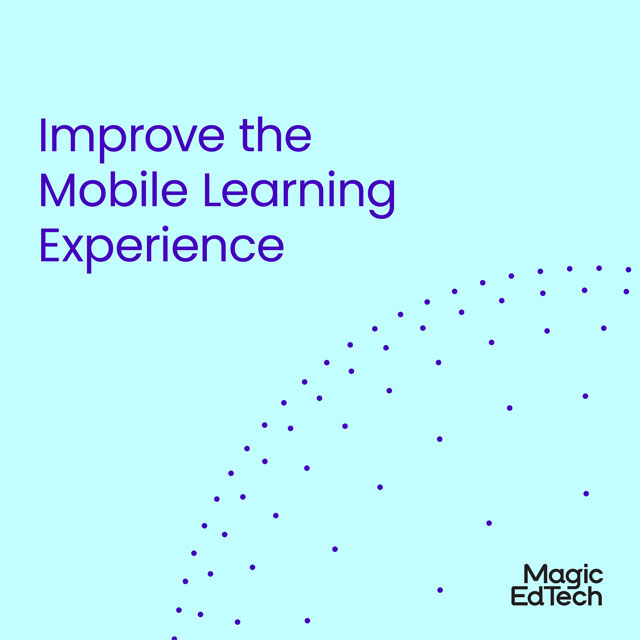“Interactive Digital Graphic Novel and Comics” Great resource types to address prime competencies of Diversity, Equity, and Inclusion
- 15 February, 2022
- Reading Time: 4 minutes
Generally, people think of Graphic novels and Comics as a medium of presenting stories targeted towards users across age groups. This perception has substance, as many classics have been written and rewritten in the comic format, both in the West and in the East. From the age-old Japanese Manga format, to the American superhero story, comics have proven to be an effective tool for bringing literacy to the masses (Frey, Fisher, 3). This is because both graphic novels and comics include a key feature that sets them apart from more traditional forms of reading – illustrations. A written piece’s efficacy can be determined by how relatable it is to the reader. Illustrations – and by association, graphic novels or comics – allow readers to make that connection, without requiring a Master’s degree in the language.
In today’s society, people lead lives that are more intricate than ever before. Race, religion, caste, sexuality, gender, socioeconomic status, and many more factors, are all key parts of the modern reader’s individuality. It would be – and for centuries, has been – wrong to misrepresent these individualities by only showing a single perspective (Smith, L., 11). As the market seeks solutions to overcome issues of diversity, equity, and inclusion, interactive graphic novels or comics can be a powerful change agent. Interactive comics can be an invaluable resource that provides connections to the writings of BIPOC, people in the LGBTQIA+ community, people in marginalized groups and differently-abled people, helping learners bring their stories to the world.
As the needs of various marginalized communities grow and change, authors can create interactive experiences bundled with interactions that express to promote understanding around important topics. At this stage in the education industry, there have been some successes brought about by the implementation of graphic novels or comics as resource type
1. Making Reading Inclusive
In the educational world, especially in situations where reading a chapter book can seem too daunting, graphic novels and comics have addressed the needs of a learner regardless of their age. By using a format that can allow the delivery of instruction without the usage of a lot of words, these stories can be made accessible to people who’s level of comprehension of the language is not up to a certain standard. This is beneficial to people who haven’t had the privilege of receiving formal education in some manner, or those who simply do not have an educated support system to guide them. Illustrations have also proven instrumental in promoting a diverse representation of people in minority communities, which challenges the dated idea of a “default” skin color, gender, or religion (Smith, L., 11). This allows the promotion of comprehension in an inclusive manner. By pouring the saved effort from writing fewer words into detailed illustrations, authors and artists can enable learners to more easily visualize perspectives different from their own, without realizing that they are employing a cognitive strategy.
2. Promoting R.A.C.E
Contrary to popular belief, the graphic novel or comic format is not limited to emerging readers. This can be seen with the addition of writing prompts at different points in the book, which can be used to assess a reader’s understanding and interpretation of the ideas cited by the author. These ideas can be captured by asking the reader to Restate, Answer, Cite, and Explain. Such writing tasks help in capturing the perspective of the learner, that includes their personal and collective experiences, along with their processes of reflection, inquiry and discovery.
3. Improving Vocabulary
Socioeconomic status has been proven to be correlated with vocabulary development in a directly proportional manner (E. Hoff, 74). comics, like any other form of literature, can be a great format to offer vocabulary instruction in several contexts. Readers learn to decode new terms through context clues, in addition with illustrative support. Because of the visual nature of the format, this brings a higher level of comprehension to lower-level readers.
So, can your comic content be made accessible?
Yes! The graphic novel and comic format, like many other writing formats, starts from the basics – setting, plot, and character development. As these formats have gotten more and more advanced, the industry has evolved with it to develop structures that can be used to identify different components of a comic strip, and then provide aid through assistive technology. A user typically navigates through a panel (that would traditionally represent a paragraph), consisting of captions, speech bubbles, thought bubbles, and onomatopoeia.
Are there any Interactive Digital graphic novel/Comic frameworks that guide inclusion of DEI into comic learning design?
Since graphic novel or comic authoring is a complex topic, the industry has developed multiple frameworks, each to satisfy certain needs, but all failing to provide a full-scope view. Given the flexibility we wish to promote, we suggest a custom framework that may be approached from multiple vantage points and adapted for different educational settings, in distinction to a logic model, which is outcomes-based and focuses on demonstrating impact.
Here is a representation of a Conceptual Comic Learning Design framework:
Figure: Conceptual framework for incorporating DEI into Comic Instruction learning design
To explore how to apply this framework to your next learning resource, feel free to reach out to me at:rishiraj.gera@www.magicedtech.com or https://www.linkedin.com/in/rishirajsinghgera/
References:
- Fisher, Douglas, and Frey, Nancy. Teaching Visual Literacy: Using comics, Anime, Cartoons, and More to Develop Comprehension and Thinking Skills. United States, SAGE Publications, 2008. (Specific reference, Page 3)
- Changing Representations of Minorities, East and West: Selected Essays. United States, College of Languages, Linguistics, and Literature, University of Hawaii, 1996. (Specific excerpt by Smith, L., Introduction, 11)
- Hoff, E. (2003), The Specificity of Environmental Influence: Socioeconomic Status Affects Early Vocabulary Development Via Maternal Speech. Child Development, 74: 1368-1378. https://doi.org/10.1111/1467-8624.00612







